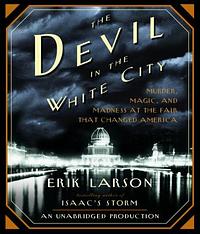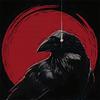Take a photo of a barcode or cover
9.34k reviews for:
The Devil in the White City: Murder, Magic, and Madness at the Fair That Changed America
Erik Larson
9.34k reviews for:
The Devil in the White City: Murder, Magic, and Madness at the Fair That Changed America
Erik Larson
informative
sad
fast-paced
informative
mysterious
slow-paced
One of the best books more history of the Chicago fair than true crime.
i got hooked as soon as I started reading this book. I was not very familiar with the Chicago Fair prior to reading this book, but what I really enjoyed was how many other historical events were tied to this fair. Larson's ability to take a historical event and present in such a way that the reader feels they are reading a novel is terrific. Chicago is one of my favorite cities in the world and I truly enjoyed reading about the different facets of this beautiful city including her dark side.
adventurous
informative
inspiring
slow-paced
dark
informative
mysterious
sad
medium-paced
dark
informative
inspiring
medium-paced
•”Hayden fought the arrangement in her quiet, stubborn way until she could take it no longer. She walked into Burnham's office, began to tell him her story, and promptly, literally, went mad: tears, heaving sobs, cries of anguish, all of it. "A severe breakdown," an acquaintance called it, “with a violent attack of high nervous excitement of the brain." Burnham, stunned, summoned one of the exposition surgeons.
Hayden was discreetly driven from the park in one of the fair's innovative English ambulances with quiet rubber tires and placed in a sanitarium for a period of enforced rest. She lapsed into "melancholia," a sweet name for depression.”
•”Crowds of strangers applauded [the Spanish princess] as she passed, for no other reason than her royal heritage. Newspapers called her the Queen of the Fair and put her visit on the front page. To her, however, it was all very tiresome. She envied the freedom she saw exhibited by Chicago's women. "I realize with some bitterness," she wrote to her mother, "that if this progress ever reaches Spain it will be too late for me to enjoy it."’
•”The wind pummeled the balloon as if it were an inverted punching bag, then tore it to pieces and cast shreds of its nine thousand yards of silk as far as half a mile away.
Morgan took the disaster calmly. "I got some pleasure out of watching the storm come up," he said, "and it was a sight of a lifetime to see the balloon go to pieces, even if it was a costly bit of sightseeing for the people who own stock in the company.”’
•”Two weeks later workers scuffled with police outside City Hall. It was a minor confrontation, but the Tribune called it a riot. A few days after that, 25,000 unemployed workers converged on the downtown lakefront and heard Samuel Gompers, standing at the back of speaker's wagon No. S, ask, "Why should the wealth of the country be stored in banks and elevators while the idle workman wanders homeless about the streets and the idle loafers who hoard the gold only to spend it in riotous living are rolling about in fine carriages from which they look out on peaceful meetings and call them riots?"’
•”The Fair had a powerful and lasting impact on the nation's psyche, in ways both large and small. Walt Disney's father, Elias, helped build the White City; Walt's Magic Kingdom may well be a descendant. Certainly the fair made a powerful impression on the Disney family. It proved such a financial boon that when the family's third son was born that year, Elias in gratitude wanted to name him Columbus. His wife, Flora, intervened; the baby became Roy. Walt came next, on December S, 1901. The writer L. Frank Baum and his artist-partner William Wallace Denslow visited the fair; its grandeur informed their creation of Oz. The Japanese temple on the Wooded Island charmed Frank Lloyd Wright, and may have influenced the evolution of his "Prairie" residential designs. The fair prompted President Harrison to designate October 12 a national holiday, Columbus Day, which today serves to anchor a few thousand parades and a three-day weekend. Every carnival since 1893 has included a Midway and a Ferris Wheel, and every grocery store contains products born at the exposition. Shredded Wheat did survive. Every house has scores of incandescent bulbs powered by alternating current, both of which first proved themselves worthy of large-scale use at the fair; and nearly every town of any size has its little bit of ancient Rome, some beloved and be-columned bank, library or post office. Covered with graffiti, perhaps, or even an ill-conceived coat of paint, but underneath it all the glow of the White City persists. Even the Lincoln Memorial in Washington can trace its heritage to the fair.
The fair's greatest impact lay in how it changed the way Americans perceived their cities and their architects. It primed the whole of America—not just a few rich architectural patrons-to think of cities inpossible
a way they never had before. Elihu Root said the fair led "our people out of the wilderness of the commonplace to new ideas of architectural beauty and nobility." Henry Demarest Lloyd saw it as revealing to the great mass of Americans "possibilities of social beauty, utility, and harmony of which they had not been able even to dream. No such vision could otherwise have entered into the prosaic drudgery of their lives, and it will be felt in their development into the third and fourth generation." The fair taught men and women steeped only in the necessary to see that cities did not have to be dark, soiled, and unsafe bastions of the strictly pragmatic. They could also be beautiful.”
challenging
emotional
mysterious
tense
slow-paced
I didn't like how this book was presented and structured and I think that's what tanked the rating and enjoyment for me. First, it's titled "The Devil in the White City." Even though the summary gives equal attention and weight to both Burnham and Holmes, the title itself implies that Holmes will be given the most focus, or at the very least EQUAL focus.
If I had to break it down into numbers, I would say this book is 70% about the World's Fair and 30% about Holmes. There's nothing wrong with a book focusing on a huge historical event and it was definitely interesting, but the summary and title were misleading about how much time was to be spent on Holmes, which was the part I was most interested in. Holmes was treated almost like another side character until the very end when we got a few chapters focused on him, which seems odd when the title of the book literally refers to him.
On the subject of the fair, all the details about architecture were overall bloated and somewhat unapproachable. There were plenty of minute details that could've been cut out for a smoother reading experience, especially the parts where I felt like I had to be a practicing architect myself just to understand the terminology being used and picture what was happening. A history book shouldn't require specialized knowledge.
Overall this book just wasn't what it advertised itself as.
If I had to break it down into numbers, I would say this book is 70% about the World's Fair and 30% about Holmes. There's nothing wrong with a book focusing on a huge historical event and it was definitely interesting, but the summary and title were misleading about how much time was to be spent on Holmes, which was the part I was most interested in. Holmes was treated almost like another side character until the very end when we got a few chapters focused on him, which seems odd when the title of the book literally refers to him.
On the subject of the fair, all the details about architecture were overall bloated and somewhat unapproachable. There were plenty of minute details that could've been cut out for a smoother reading experience, especially the parts where I felt like I had to be a practicing architect myself just to understand the terminology being used and picture what was happening. A history book shouldn't require specialized knowledge.
Overall this book just wasn't what it advertised itself as.
Interesting subject matter and well written, but spends too much time on the planning of the fair and on boring old white men.
adventurous
dark
informative
slow-paced
Really interesting! Learned a lot while also being intrigued by the plot.


